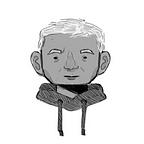Whispers of Wisdom: Growing Up in a Family of Storytellers
I grew up in a family of storytellers, where storytelling was not just a form of entertainment but also a way to pass on our cultural traditions. My grandmother was a great storyteller. As kids, we would hear three stories: ‘Monkey and the Payasam’, ‘Kakamma and Guvvamma’, and ‘The King and his seven sons’. The first story is about a monkey making ‘kheer’. My grandmother would describe all the ingredients and the process in detail. We loved the narration and the monkey’s struggles to make a delicious kheer using the tail as a stirrer. Though we knew the ending, we eagerly looked forward to the part when the monkey drank the water from the well. Similar is the story of ‘Kakamma’ and ‘Guvvamma’. ‘Kakamma’ is a crow and ‘Guvvamma’ is a sparrow. We thought it was customary for two different species to live together, belonging to the female gender, not knowing the gender diversity. The third story is about a king and his seven sons who go fishing and get seven fish. I can’t imagine how a story about fish and dried fish became popular in a vegetarian family. My grandmother’s narration kept us spellbound.
As we grew up, she would pick up a random picture in a magazine and tell a story, vividly describing the relationships between the characters and the emotional connections. I later learned that this technique is a form of storytelling called the Thematic Apperception Test (TAT). It is a projective psychological test that involves creating stories about ambiguous scenes.
Talking about my grandfather, I remember him narrating Tagore’s famous ‘The Wreck’ and ‘Home Coming’ for days with minute details. The scenes of Hemanalini making semolina upma for breakfast and coffee for Dr Nalinaksha or Phatik Chakraborthy handing over his marbles to his brother before he left for Kolkata in ‘Home Coming’ are still vivid. Again, I can’t imagine a Bengali family eating ‘upma’ in the early 1900s. But my grandfather’s narration was always full of creative ideas and imagination. I can never forget the nights of listening to the ‘Harikathas’ and ‘Burra Kathas’ in my local Shiva temple, which are religious narratives in a traditional storytelling format.
Storytelling is not just a pastime but a part of my identity. Whether I’m engrossed in the works of Somerset Maugham, O Henry, Anton Chekov, Kafka, or the rich folklore of my region, each story holds a unique power. It’s not just the message but how it’s narrated that truly captivates me. Storytelling is an exciting process, no matter the format. It is not only a science but also an art.
Today, storytelling has evolved into a powerful tool. Organizations invest significantly in training their employees in this art, recognizing its ability to connect, inspire, and convey ideas. Reflecting on my journey, I am aware of the profound impact of storytelling. It has the unique ability to stir emotions, impart wisdom, and foster deep connections. Whether it’s my grandmother’s folktales or renowned authors’ literary masterpieces, storytelling will always hold a special place in my heart.
